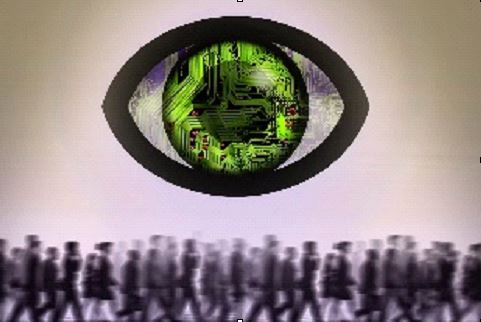(By: Kainat Rajput)
In recent times, the concept of border regulation has increasingly transitioned from physical barriers to the online domain. Presently, according to new reports, the U.S. Immigration and Customs Enforcement (ICE) is establishing a continuous social media surveillance system to monitor public internet activity for potential leads in enforcement (Bennett, 2025). This change signifies a crucial turning point, where law enforcement transcends geographical boundaries and infiltrates the daily online interactions of countless individuals. The consequences for individual privacy, civic engagement, and democratic liberties are significant.
What Is the Plan?
All the Materials examined by investigative reporters reveal that ICE is currently looking for private firms to operate two “social media surveillance centers,” one located in Vermont and another in California (Cameron, 2025). The analysts will work continuously, keeping an eye on sites such as Facebook, X (previously called Twitter), Instagram, YouTube, and TikTok.

These private firms will gather, assess, and compile posts, images, and user profiles into enforcement files. High-priority instances are likely to be recorded within half an hour, while standard cases will be documented within a 24-hour time frame (Cameron, 2025). Moreover, ICE intends to merge this publicly available data with commercial databases like LexisNexis Accurint, Thomson Reuters CLEAR, and Palantir Technologies’ Investigative Case Management (ICM) system, correlating online activities with personal information, including phone numbers, home addresses, property records, and even facial-recognition data (Washington Post, 2020; Intercept, 2021). This would essentially establish an ongoing surveillance infrastructure that integrates public social data with private information databases—all under the direction of immigration enforcement.
A New Surveillance Architecture
Though law enforcement agencies have historically utilized social media in investigations, this program signifies a fundamental change. Rather than merely responsive, case-related monitoring, ICE’s framework anticipates constant, automated surveillance driven by contractors (Bennett, 2025). Dell Cameron (2025) highlights that the intended “watch floors” are designed that work more like a news operation or command center instead of a conventional enforcement agency, suggesting a shift towards large-scale digital oversight. This development obscures the distinctions between immigration enforcement, local policing, and intelligence gathering—an advancement that civil liberties advocates caution may threaten constitutional rights to privacy.
Why It Is Important
⦁ Suppressing Freedom of Expression
Studies conducted after the 2013 Edward Snowden revelations showed that individuals significantly decreased their visits to Wikipedia articles regarding sensitive issues when they sensed they were under surveillance (Marthews & Tucker, 2016). Similarly, Bennett (2025) cautions that awareness of ongoing ICE surveillance may deter immigrants, activists, and even ordinary individuals from participating in online discussions about government policies or immigration reform.
⦁ 2. Expansion of Duties
ICE has a history of broadening its scope whenever new digital tools are introduced. Currently, the agency employs Clearview AI for facial recognition and uses Babel Street’s Locate X for tracking locations (Intercept, 2021). Once a system that monitors social media continuously becomes active, its application can easily spread beyond just immigration matters, potentially affecting political opposition, journalists, or protests. The danger of “function creep” is heightened when private entities, instead of government officials, decide which information is gathered and categorized as “risk indicators.”
⦁ 3. Shifting Responsibility
By outsourcing the gathering and analysis of data to external contractors, ICE decreases its own accountability for transparency. These private companies do not operate under public records laws and are not governed by the same ethical or legal limitations that federal agents must follow (EFF Report, 2024). This results in a covert enforcement method, where an individual might be monitored, scrutinized, or categorized without ever being informed of the underlying reasons or methods.
⦁ Evidence of Scale
The framework supporting ICE’s initiatives can already be seen in its acquisition and software environment:
⦁ Palantir ICM System (2019–Present): A primary platform designed to store, link, and analyze personal information, inclusive of publicly available social media data.
⦁ LexisNexis & CLEAR Contracts (2021–2024): Contracts worth millions that grant instant access to commercial data and analytics for enforcement purposes.
⦁ Clearview AI Partnership (2020): A facial-recognition search platform utilizing billions of collected social media images.
⦁ Babel Street’s Locate X (2021): A location analysis tool capable of tracking mobile device movements without the need for warrants.
⦁ ShadowDragon SocialNet (2022): A tool for mapping social networks that connects online identities across diverse platforms.
All these technologies contribute to a comprehensive digital surveillance framework, shifting ICE’s enforcement capabilities from simply reactive to anticipatory.
The Wider Democratic Consequences
This method of automatic, ongoing scrutiny of social media raises significant ethical and constitutional concerns, including;
⦁ Diminishing Freedom of Speech: Continuous surveillance threatens to suppress open conversations about sensitive subjects such as immigration, race, or international relations.
⦁ Surveillance of Networks: Even people with no direct immigration connections may find themselves monitored due to their digital associations with others.
⦁ Lack of Transparency and Bias: Algorithmic evaluations can misinterpret humor, satire, or political commentary as threats. Without transparency in these processes, such mistakes cannot be challenged.
⦁ Privatization of Authority: When governmental oversight is dependent on private tech companies and data providers, the public loses both insight and the ability to challenge actions.
Civil rights organizations like the Center for Democracy & Technology (CDT, 2024) caution that such data systems normalize surveillance practices that extend well beyond immigration issues. Once entrenched, these systems can be repurposed by local law enforcement or divisions focused on political security.
Safeguards and Recommendations
⦁ To respond to these threats, authorities suggest a variety of measures:
⦁ Transparency Reports: Organizations are required to make public announcements regarding which platforms and datasets are under scrutiny, the duration for which data is kept, and the involvement of contractors.
⦁ Judicial Oversight: Digital monitoring intended for enforcement must obtain judicial consent or warrants akin to those required for in-person searches.
⦁ Independent Auditing: Bodies focused on civil liberties or congressional oversight should consistently evaluate ICE’s surveillance systems to check for biases and improper use.
⦁ Limitations on Data Sharing: Strict distinctions must be established to keep immigration enforcement separate from domestic intelligence or criminal records.
⦁ Contractor Accountability: Private companies must adhere to the same privacy regulations, non-discrimination policies, and due process norms as government officials.
⦁ Public Education: The public should be made aware of how their online behavior may be gathered and analyzed, enabling them to utilize privacy-enhancing tools and settings.
A Digital Border for a Digital Age

Bennett (2025) accurately calls this change the establishment of a “digital border”, an unseen barrier where surveillance penetrates everyday online activities. The state’s scrutiny no longer ceases at entry points; it tracks individuals through screens and algorithms. If executed without rigorous oversight, the ICE initiative could set a troubling precedent for ongoing domestic surveillance, altering the dynamics of how free societies operate in a data-connected era. The focus has shifted from merely identifying who crosses the border to questioning who determines its parameters and who observes from the opposite side.
Disclaimer:
This article is intended solely for educational and informational purposes. It seeks to encourage public understanding of issues regarding privacy, technology, and civic participation, based on verified and publicly available sources. The content does not endorse, accuse, or target any individual, institution, or government agency. The writer is not responsible for any misinterpretation, misuse, or unintended consequence arising from the reading or sharing of this article. All views expressed are for informational and analytical discussion only and do not represent any official stance or classified insight.


